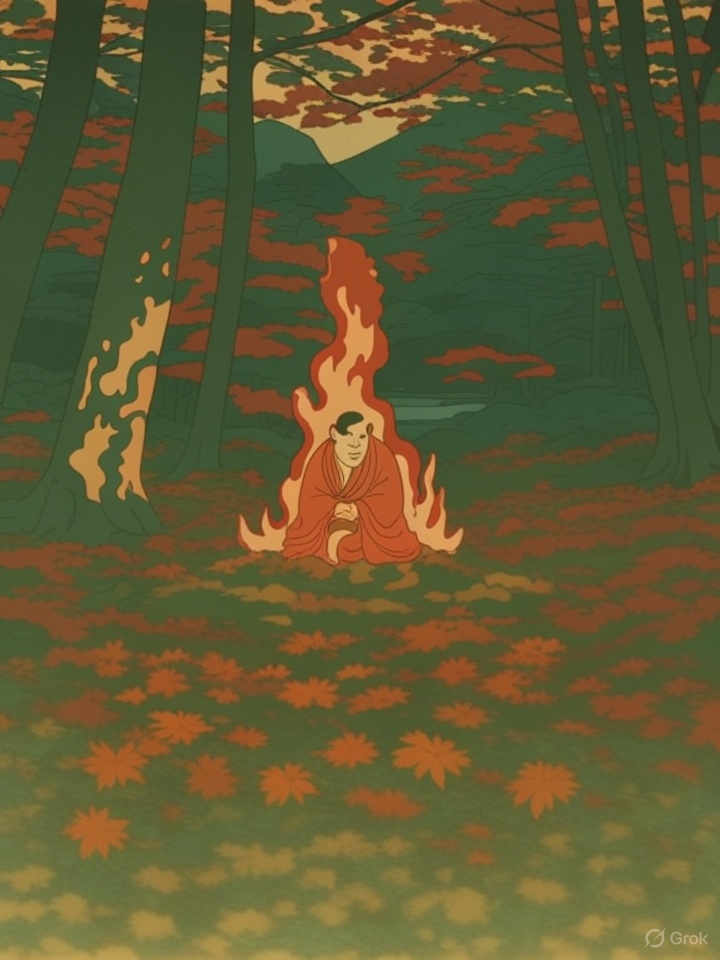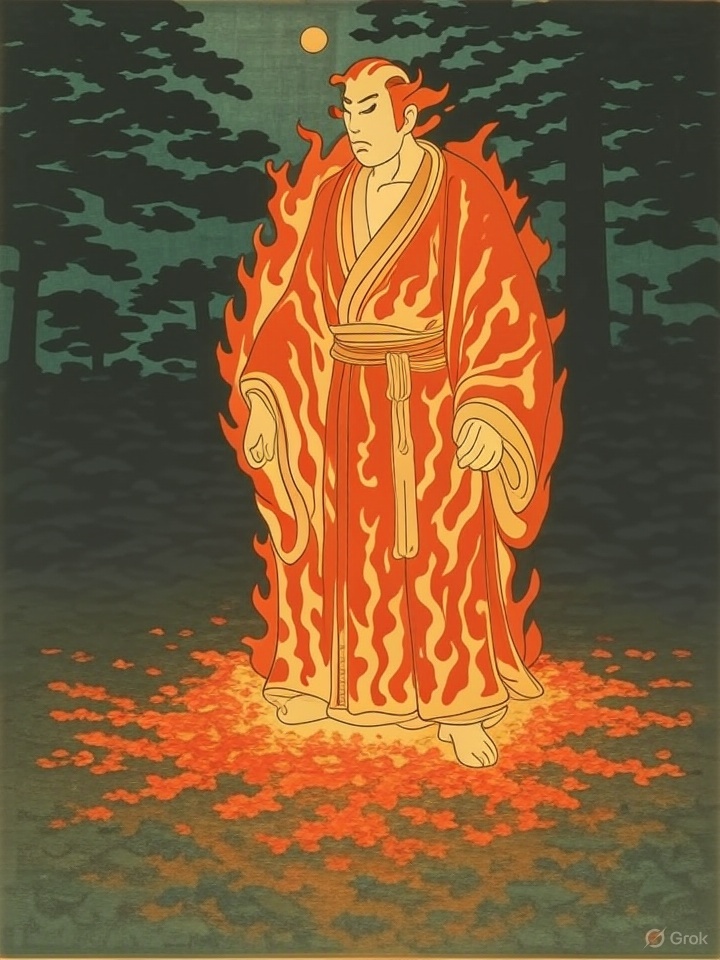Origin & Mythology
The Shiga Prefecture in central Japan is known for lakeside legends and mysterious fires seen at night.
Abura-bō is a type of atmospheric ghost light or hitodama, similar to will-o’-the-wisps in Western folklore.
Appearance
- Glows like a floating fireball or ghostly flame.
- Within the flame, the faint silhouette of a monk—often bald, in robes, and holding prayer beads or a staff—can sometimes be seen.
- Appears hovering over fields, paths, or water at night, especially during humid or foggy weather.
Behavior
- It floats silently, sometimes following travelers or monks.
- It is not directly harmful but can lead people astray or inspire fear.
- Legends say that those who follow it too far may become lost or fall ill, implying spiritual or karmic consequences.
Symbolism
- Oil (abura) in the name may relate to lamp oil, fire, or offerings at temples.
- The “monk” shape could represent:
- The restless soul of a disgraced or wandering monk.
- A spirit punished for misdeeds (like stealing oil or breaking temple vows).
- Like many yōkai, it may reflect local superstitions around fire, the afterlife, and moral conduct.
In Folklore Collections
- While less widely known than some yōkai, Abura-bō appears in regional ghost story compilations.
- It shares characteristics with:
- Onibi (demon fire)
- Hitodama (human soul flame)
- Ubagabi (flame in the shape of an old woman)




